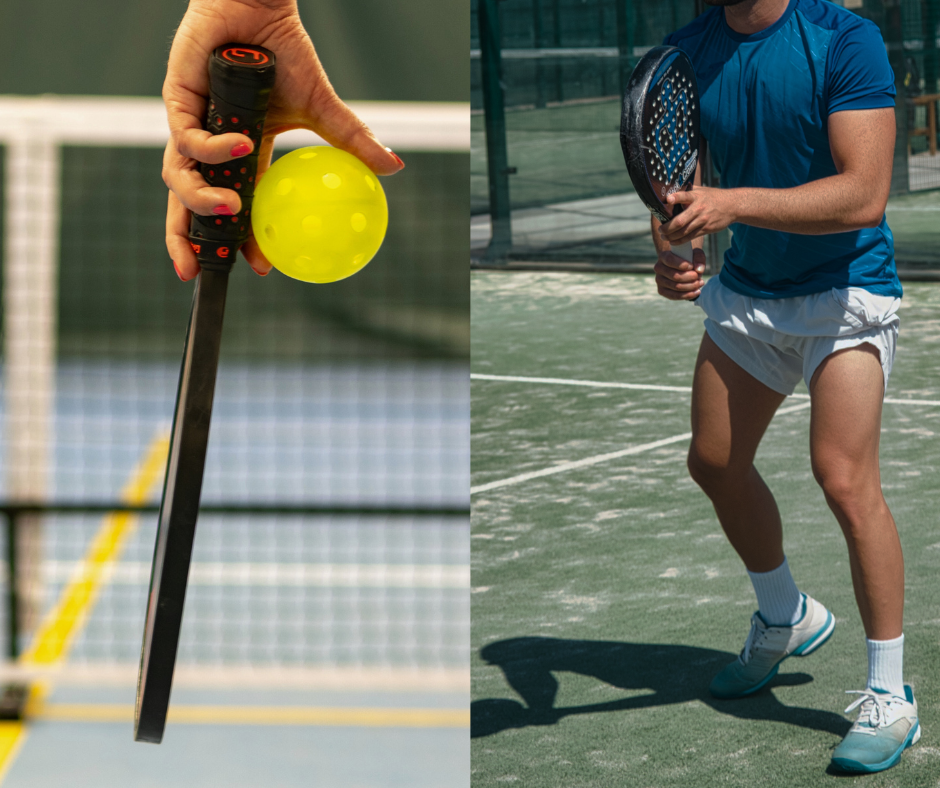In one corner, the sport that’s taken over the US – with investors like LeBron James and Tom Brady, blossoming pro leagues and the core of friendship groups across the country.
In the other corner, the world’s fastest-growing game, the long-held Spanish obsession that is gripping the globe with courts popping up across Europe, Asia and the States.
Everyone’s clamouring to pit pickleball against padel in some battle for prime position as the poster child for the global racquet sports boom… but it shouldn’t be this way.
If you’ve been bitten by the pickleball bug, you’d be hard pushed not to love padel. If you’re already padel crazy, pick up the pickleball paddle and you’ll soon see what all the fuss is about from California to Connecticut, and Delaware to Dakota
It all feeds into racquet sports being on a participation rise – whether you’re a pickleball nut, a padel devotee or a tennis traditionalist, you’re being joined by more and more people on the court every week.
“It’s a racquets world,” Dan Santorum, chief executive of the Professional Tennis Registry, told the New York Times. “A lot of the search firms are looking for triple threats when they are looking for teaching pros for clubs. It’s no longer just a director of tennis. It’s a director of racquets.”
So while the media at times has been keen to stoke up a rivalry between these ‘new’ sports – in fact both have been around since the 1960s – and cast them as threats to tennis, nothing could be further from the truth.
Pickleball was invented in Bainbridge Island, Seattle in 1965 by Joel Pritchard and Bill Bell – with the game that started as a quest to keep their children occupied soon adopted by the surrounding Northwest community, with a young Bill Gates being an early devotee. It then spread across the US until claiming the status it enjoys today as the sport that has taken over America.
It’s played with solid paddles and a perforated plastic ball, on a rectangular court separated by a net – with a non-volley zone (the "kitchen") near the net on both sides.
The advantage here is pickleball courts can be fitted onto existing tennis courts with new line markers, while padel courts must be specially built, complete with the walls so vital to the global sensation.
However, they are being specially built at a booming rate – all over the world. The number of courts in the UK has roughly doubled in 2023, while it is predicted in the US there could be as many as 40,000 padel courts across the country in 10 years’ time. Long-time padel strongholds of Dubai, South America and Scandinavia can also all attest to its growth.
Padel traces its roots back to Acapulco, Mexico, in the 1960s, where Enrique Corcuera first created the game on a private tennis court. However, it wasn't until the sport reached Spain that it truly gained momentum. Introduced in the early 1970s by Prince Alfonso of Hohenlohe-Langenburg, padel quickly gained a foothold within Spanish society.
It combines elements of tennis and squash, played on a smaller court with walls – which can be used to keep the ball in play at all times. The fast-paced and dynamic gameplay. The sport's community-driven nature has been a major driver, creating a welcoming environment that encourages both newcomers and experienced players to come together.
If that sounds familiar to the army of ‘Pickleheads’ across the US, it should be – it’s exactly why America has fallen in love with the game.
That proves these two sports can co-exist alongside the buffet of racquet sport action to be gorged on as multi-sport clubs pop up all over the country. They reward different skill sets but have a core similarity – if you adore one, there’s every chance you’ll fall in love with the other. In other words, the two sports are not mutually exclusive.That’s what we’re celebrating at RacquetX next March in Miami – the amazing growth and community around all these racquet sports. It’s not pickleball versus padel, or tennis – or even squash and badminton… they all complement each other seamlessly.

